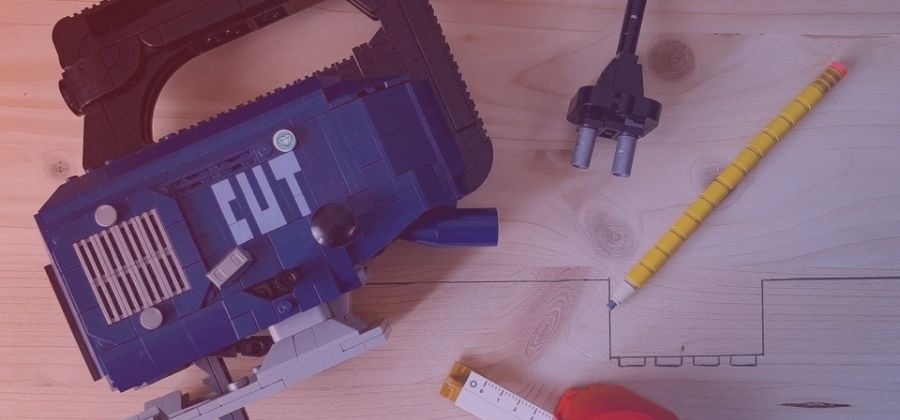
If you ever wonder and think that Jigsaw might not cut 2×4, then this article is going to surprise you. This beginner’s guide offers a step-by-step guide on how to use a jigsaw to cut 2×4 pieces of wood. Don’t get overwhelmed by a plethora of YouTube DIY videos about how to use a jigsaw to cut thicker woods because these simple tips about Using a Jigsaw to cut 2×4 will make your task safer and more accessible.
Jigsaw is a woodworking instrument used to cut curved and straight lines in woods together with plastic and metals. Jigsaws are ideal tools for cutting woods into shapes or lines, as using a saw is not always convenient. In tandem with the convenience, jigsaws are very inexpensive as compared to other woodworking tools.
But bear in mind! Jigsaw cuts in up and down motion, and to attain excellent results, make sure to use a specific blade as per the type of material you will cut. To cut properly with a jigsaw, drift, and flexing should be kept to a minimum to avoid cuts that are rough on the top and out of the line at the bottom.
To keep the cut square, always use a sharp blade and avoid pushing the saw within the cut. Can Jigsaw cut 2×4? It can be answered with jigsaw blade length, its stiffness, and the material of the blade should be checked before cutting thicker wooden pieces. The blade should be long and strong enough to get the proper depth of cut that is intended. Always place your wood in a flat place and mark out the lines beforehand to cut.
Things you need before cutting using Jigsaw:
- Blades
- Mask
- Safety glasses
- Square/measuring tape
- Pencil
Steps on How to do Straight Cuts on 2×4 Lumber using a Jigsaw
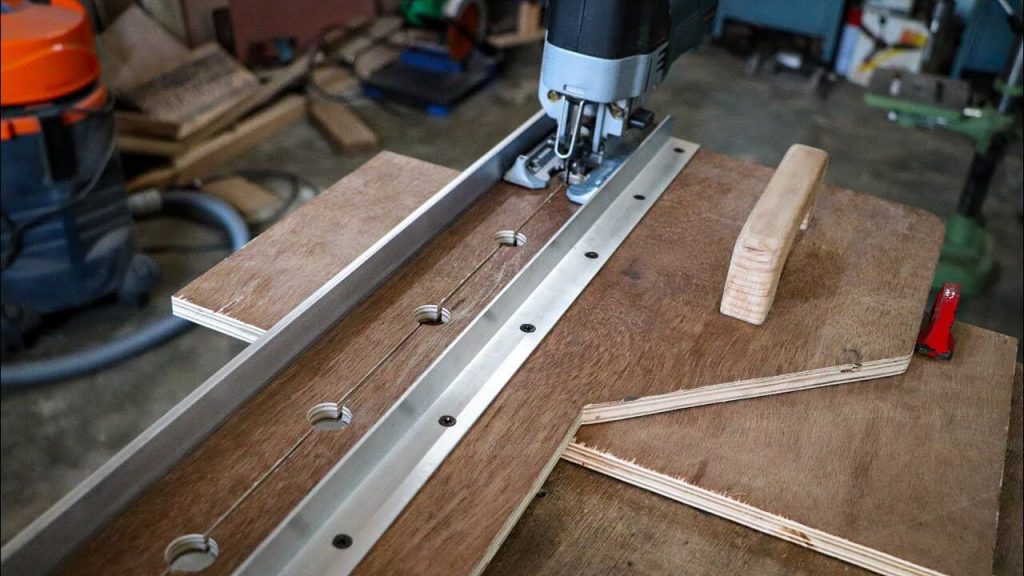
- First things first, choose the appropriate length and material of the blade as per the type of wood used. Before starting, measure and mark the size using a lead pencil and make a square. Place Jigsaw in the position that the blade is on the waste side of the cutting wood.
- Rest the Jigsaw on the wood and turn it on.
- Now, guide the Jigsaw gradually in one go.
- The shoe should be flat against the surface of lumber and do not tip the Jigsaw forward while pushing it along, and do not hold the Jigsaw too longer in one place. Make sure that base of the saw stays on and moves easily on top of lumber as you cut.
- Keep your pace consistent till the end, and do not leave the line, especially towards the end, as the end blade tends to move right and left.
How to Make Bevel Cuts in 2×4 Lumber
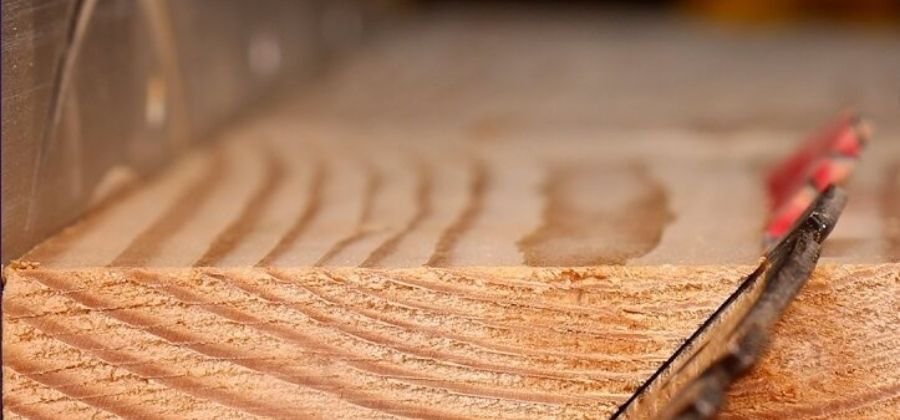
- While making bevel cuts, controlling Jigsaw is essential. Firstly, set the shoe of the Jigsaw at 45 degrees, and after locking it confirm that blade is at the required angle relative to the shoe. Mark a line on the wood.
- Make a straightedge at the right offset distance from the line and move the Jigsaw shoe while cutting.
- Place your Jigsaw in a way that blade is positioned by the cutting line on the waste side of the cut. Then, Turn on the Jigsaw.
- While keeping your one hand on the Jigsaw and your thumb on the shoe, give it a downward pressure and move the Jigsaw straight ahead in the cut and keep the Jigsaw at the same angle throughout.
- While cutting, apply minimum pressure on the Jigsaw and allow the blade to cut. Complete the cutting in one go, while one hand moves the Jigsaw forward and the other keeps a downward force on the shoe.
How do you Cut 2 x 4 pieces of Wood using Jigsaw?
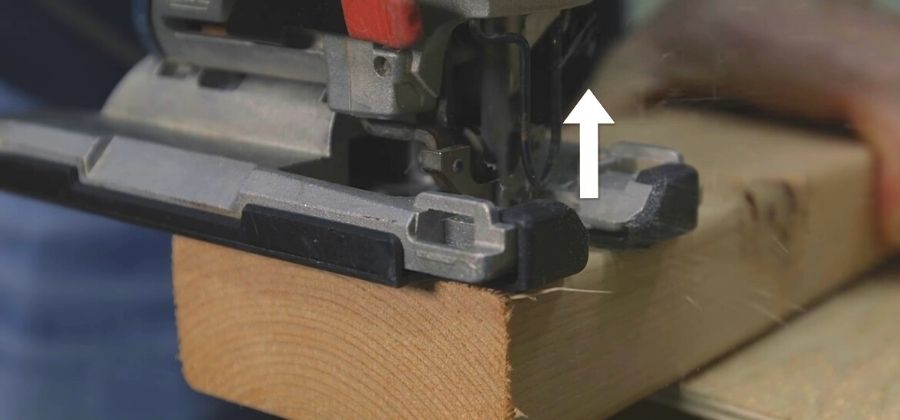
- Cutting tiles into different shapes and making different curves with tile cutters and ceramic rods can break down tiles. So, to avoid breakage, of tile jigsaw can be used.
- To cut tiles with a jigsaw, use toothless blades. When cutting thin tiles, frequently apply water, and to cut thick lines, lubricate the saw using oil.
- To avoid the breakage of tiles, it is important to clamp down the tile tightly and hold the saw firmly on the tile to control the blade’s vibration.
- Cut slowly by using short relief cuts to remove the waste and move blades slowly through the cuts.
Tips on Using a Jigsaw on Thicker Wood
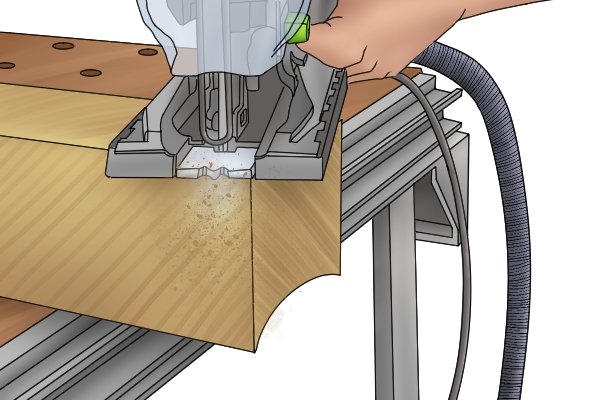
- Cutting thick woods using Jigsaw needs some techniques and a couple of good-quality blades. Do not tilt the Jigsaw forward or on the sides while cutting and concentrate on moving it steadily forward on the line as it will affect how deep a jigsaw can cut so you might not get desired results with tilted angles.
- Don’t rush and try to cut yourself. Instead, of allowing the Jigsaw to cut, rushing the cut would flex the blades of the Jigsaw and will move it away from the perpendicular.
- There are chances that the blade would wear out immediately while cutting thicker wood, so look how the blade is making the cuts.
Safety Measure before performing any task on Jigsaw
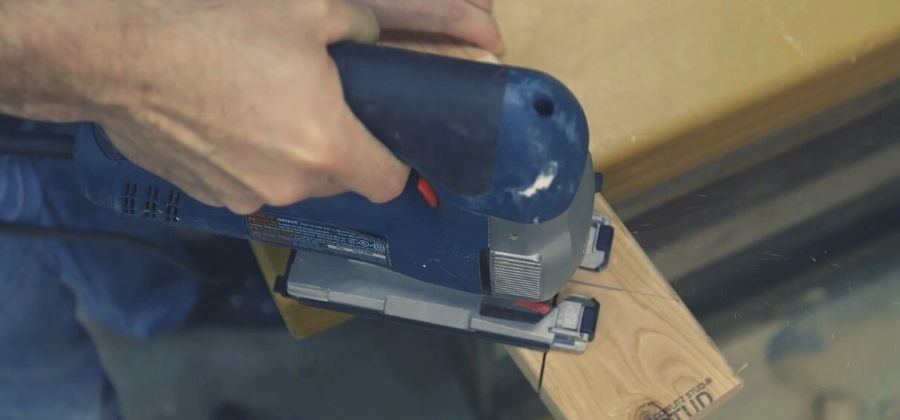
- Firstly, properly go through the manufacturer’s guide before using the Jigsaw, and if you are buying a jigsaw for the first time, read the instructions for unpacking and setting up properly.
- Ensure to wear safety glasses, hand gloves, footwear, and proper safety gear before using a jigsaw, as these things reduce the chances of damage in case of any mishap.
- Select an appropriate blade and after fixing the blade properly, move the Jigsaw away, and ten turns on the Jigsaw, and press the button gradually.
- Make sure that saw is firmly installed and is working properly.
- Before starting the real work, try some test cuts on some samples.
- Most importantly, keep such tools out of the reach of children.
Conclusion
Jigsaws are helpful tools to cut different shapes and make different curves. Jigsaw makes intricate designs with great precision through a thin blade. So, when buying a jigsaw to cut a 2×4 piece of wood, go for a powerful jigsaw that has stiffer blades.



